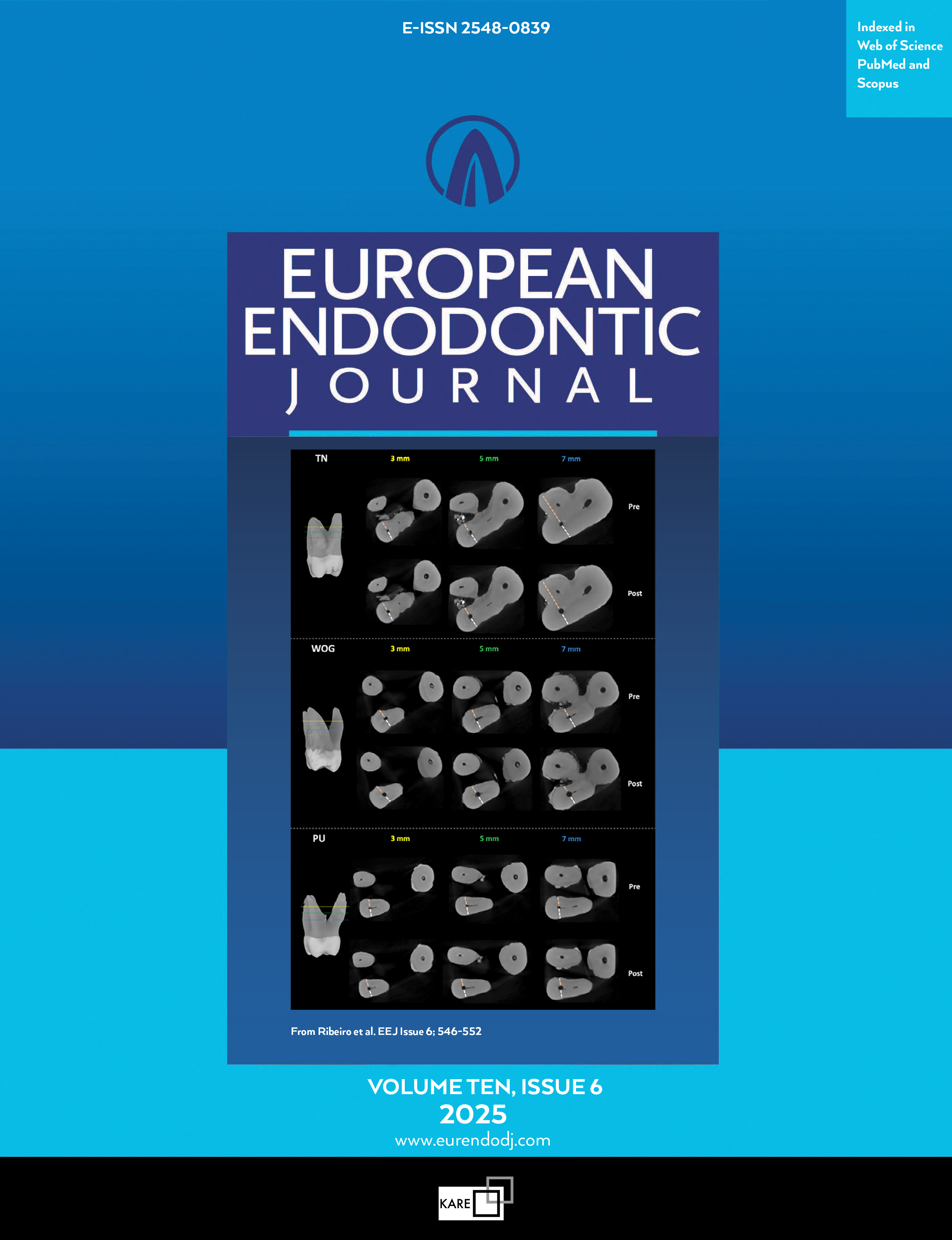Metrics
2024 IMPACT FACTOR
5 year Impact Factor
Eigenfactor Score
2024 CiteScore
Journal Citation Reports
(Clarivate 2025, JIF Rank)
Expression of Osteogenic Genes in Dental Pulp and Their Correlations in Patients with Clinically Diagnosed Irreversible Pulpitis
Faisal Alonaizan1, Hatem Abuohashish2, J. Francis Borgio3, Sayed Abdulazeez3, Yaser Alqabbani4, Doaa M. Aleraky51Department of Restorative Dental Sciences, College of Dentistry, Imam Abdulrahman Bin Faisal University, Dammam, Saudi Arabia2Department of Biomedical Dental Sciences, College of Dentistry, Imam Abdulrahman Bin Faisal University, Dammam, Saudi Arabia
3Department of Genetic Research, Institute for Research and Medical Consultations (IRMC), Imam Abdulrahman Bin Faisal University, Dammam, Saudi Arabia
4College of Dentistry, Imam Abdulrahman Bin Faisal University, Dammam, Saudi Arabia
5Department of Biomedical Sciences, College of Medicine, Gulf Medical University (GMU), Ajman, UAE
Objective: This case-control study aimed to explore the expression of different osteogenic-related genes in inflamed dental pulp and to correlate these expressions amongst each other and with the extent of pain.
Methods: Dental pulp tissues were collected from patients who were diagnosed with irreversible pulpitis. All samples were processed for RNA extraction and analysis of bone morphogenic protein 2 (BMP2), RUNX family transcription factor 2 (RUNX2), dentine sialophosphoprotein (DSPP), dentine matrix acidic phosphoprotein 1 (DMP1), bone gamma-carboxyglutamate protein (BGLAP), and alkaline phosphatase, biomineralization associated (ALPL) gene expression using real-time PCR. Pearson's correlation analysis was used to assess the linear relationships between different genes and the extent of pain, where p<0.05 was considered significant.
Results: The demographic and clinical characteristics of the patients varied according to age, sex, tooth type, clinical diagnosis, pain level, percussion pain response, and palpation pain sensitivity. The expression levels of the RUNX2 and BGLAP genes in the inflamed dental pulp were significantly greater than those in the control samples. Pearson's correlation analysis demonstrated significant positive correlations between the expression of the BMP2 and BGLAP genes and between the RUNX2 and DMP1 genes within inflamed pulp tissues.
Conclusion: Irreversible pulpitis was associated with positive coordination among odontoblastic activities, metabolism, and dentine formation as a compensatory mechanism. Our findings provide information on the molecular pathogenesis of pulpitis, suggesting future treatment approaches. (EEJ-2024-11-182)
Keywords: Dental pulp, gene expression, odontogenic, osteogenic, pulpitis
Manuscript Language: English
(323 downloaded)



